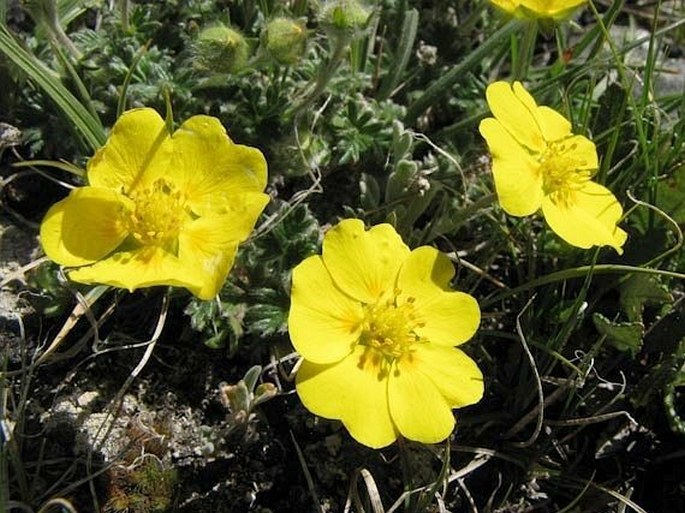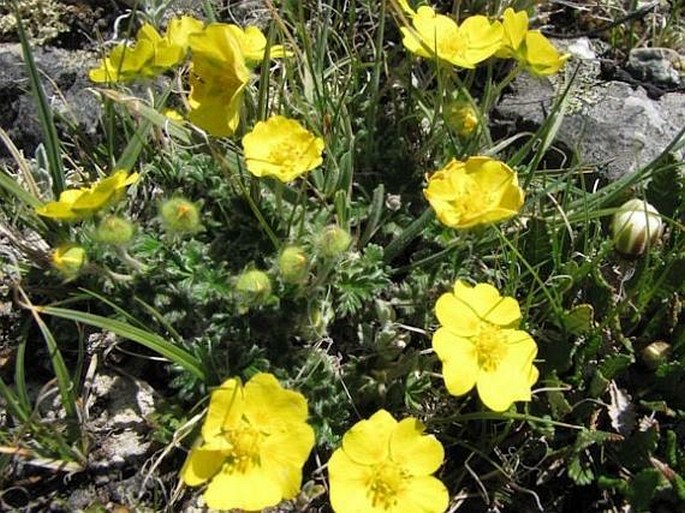Syn.: Fragaria nivea (L.) Crantz, Potentilla prostrata subsp. floccosa Soják, Potentilla nivea var. subquinata Lange, Potentilla subquinata (Lange) Rydb., Potentilla nivea subsp. fallax Porsild, Potentilla nivea var. tomentosa Nilss.-Ehle
Family: Rosaceae Juss.

Distribution: Taxonomically problematic species with an almost circumpolar distribution – from Alaska through all Canadian provinces and Territories and western states of US, from Montana south with exception of California. Also present in eastern Asia and Europe. Taxon Potentilla nivea is part of a complex of several species whose classification is not yet resolved. The most important common features are trifoliate, densely hairy leaves, hairy stems and flowers in clusters.
Ecology: Well drained alpine slopes and meadows at altitudes from 1600 to 3500 m. Blooms from June to August.

Description: Perennial herb, 3–15 cm tall, from branching root crown and short rhizomes, forming cushions up to 30 cm across. Basal leaves compound, 2–10 cm long, 3 leaflets, oblong to oval to elliptical, 1–2 cm long, stalks with woolly hairs, densely woolly below, margins with 3–5 teeth on each side, 1–2 smaller stem leaves may be present. Inflorescence 1–5-flowered cyme; flowers rich yellow, heart-shaped with darker base of petals, pentamerous, perfect, numerous stamens and pistils, bracts alternating with sepals. Fruits are achenes, 2 mm long borne in clusters.
Note: Nivea implies snow, as this plant grows in high altitudes and starts usually blooming surrounded by snow.



These images were taken in Canada, Alberta, Plateau Mountain (July 2011).


